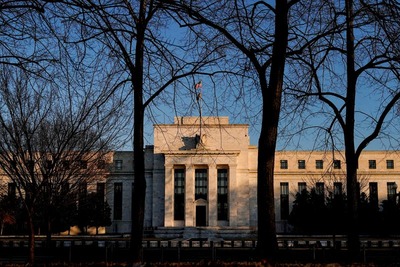NY Fed details likely looming rise in troubled student loan borrowing

"We expect to see more than nine million student loan borrowers face substantial declines in credit standing over the first quarter of 2025," the regional Fed bank said in a blog posting.
New York Fed economists acknowledged there's lots of uncertainty over how this increased trouble in the student lending sector will play out, but noted that those with higher levels of credit scores appear to have the most room to lose.
"If prime and super-prime borrowers fell behind on student loan payments, the aggregate drop in credit standing among student loan borrowers could be much larger," they wrote, adding "this would result in reduced credit limits, higher interest rates for new loans, and overall lower credit access."
Other data from the New York Fed as well as other sources have pointed to increased fraying in the broader state of credit as the economy descends into a period of high uncertainty due to the Trump administration's sweeping policy changes.
Student loan borrowers have played a prominent role in credit issues over recent years. Government support efforts during and after the most acute phase of the COVID-19 pandemic granted student loan holders payment forbearances, and the Biden administration tried to forgive many types of loans, although much of that effort was stymied in the courts.
Student loan borrowing terms have largely returned to where they were before the pandemic and economists and others are trying to see how much stress government support efforts papered over.
LASTING DAMAGE
The New York Fed report noted that before pandemic forbearance programs an in-house estimate of the effective delinquency rate for student loans hit a high of 14.8% in the second quarter of 2018 and was around 14% through much of 2019. Once loan payments were required again, the New York Fed's "shadow" estimate of the delinquency rate stood at 15.6% during the fourth quarter, with 9.7 million borrowers holding
A report in February from the New York Fed said in the fourth quarter total outstanding student loan debt totaled
Given how the data is reported and processed, student loan delinquency rates are only just starting to make their way into credit reports. The New York Fed said "it is reasonable to expect student loan delinquency to surpass pre-pandemic levels when new delinquencies hit credit reports."
While some troubled borrowers may be able to get back on track quickly, the report said the damage will nevertheless last for some time and "will remain on their credit reports for seven years."
(Reporting by
(c) Reuters 2025. All rights reserved. Republication or redistribution of Reuters content, including by caching, framing or similar means, is expressly prohibited without the prior written consent of Reuters. Reuters and the Reuters sphere logo are registered trademarks and trademarks of the Reuters group of companies around the world.
Related News

-
No longer 'poor but sexy?' Berlin's economic rise comes at a price
Reuters - 2:16 AM ET 3/29/2025
-
India court rejects JSW Steel, Trafigura request to clear certain met coke imports
Reuters - 36 minutes ago
-
US orders French companies to comply with Trump's diversity ban
Reuters - 5:27 PM ET 3/29/2025
-
US to revoke authorizations to foreign partners of Venezuela's PDVSA, sources say
Reuters - 6:10 PM ET 3/29/2025
-
Poste to become Telecom Italia's No.1 investor by buying 15% from Vivendi
Reuters - 2:08 PM ET 3/29/2025
-
Trump tells NBC he 'couldn't care less' if car makers hike prices due to tariffs
Reuters - 8:08 PM ET 3/29/2025
-
Stellantis to buy CO2 credits from Tesla 'pool' also in 2025, exec says
Reuters - 9:19 AM ET 3/29/2025






